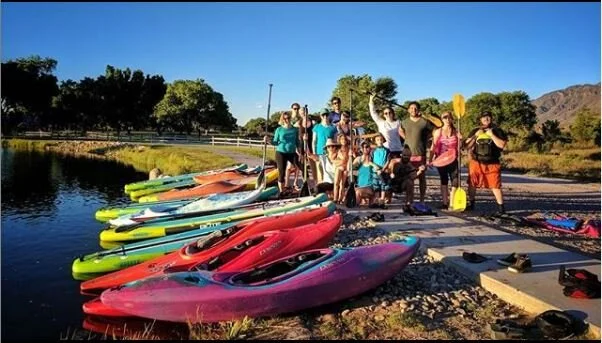Kayaking: A Beginner’s Breakthrough
While recently teaching a small group of whitewater kayaking enthusiast I saw the moment, that moment when the light bulb comes on and a significant breakthrough happens. We were sitting in an eddy, and I was offering beta of what lay ahead of us, our view was obstructed by several large blocks sitting in the river. The large boulders didn’t create any real rapids just an opportunity for us to slow our progress and begin to look through the turn, identify eddies, and practice boat control. It was during this time that two paddlers came by in play boats really working the river. I took the opportunity to point out several things they were doing that helped them maneuver through the large boulder maze. I pointed out how they controlled their speed, made use of beautiful sweep strokes and eddy hopped.
I encouraged the students to use the principals they had just observed. I encouraged that they attempt to exude confidence in their strokes just as the other two paddles had done. I paddled ahead and found a nice large eddy, and signaled to the group that they could follow. As each student made their way around several boulders, they added speed and slowed when need. Their strokes had a meaning. Control was on the cusp and as they finished this task we met in the eddy below. They described how much more in control they felt. How the ability to maneuver became easier as their speed changed.
As class continued they were able to maintain this confidence and the students were able to place their boats where they needed to be. All it takes sometimes is slowing the river down to their speed and it is at that time they can make a break through. As we kayak more and more we get better at dealing with the stress of the river. The noise, the visuals stimulus, and the physical nature of the river against our kayak, is something that can be overwhelming to new boaters, and like new drivers they need time to acclimate to this new stimuli. I enjoy teaching drills like ferrying or catching eddies with your eyes closed to reduce the amount of stimulus the student gets. It often times is all they need to feel what needs to happen with the kayak.
By using just the kinesthetic feel of the boat as it glides or carves across the river the student has to only focus on that on stimulus. It offers them the time, which they did not know they had before to correct the boat angle, or lean as they perform these tasks. If you have students feeling overwhelmed, overly anxious this is their drill to regain their confidence. Slowing the river down to their speed is the fastest way to create confidence, and begin stress inoculation. Remember we cannot force the river to do anything, but we can work with its waves, currents, and eddies to slow it down, and make wise choices.
Remember as a student learning a new discipline, you don't know what you don't know, or even what your looking at sometimes. It is up to you to find answers to these questions via quality instruction. Until next time, keep working on your kayak roll.

